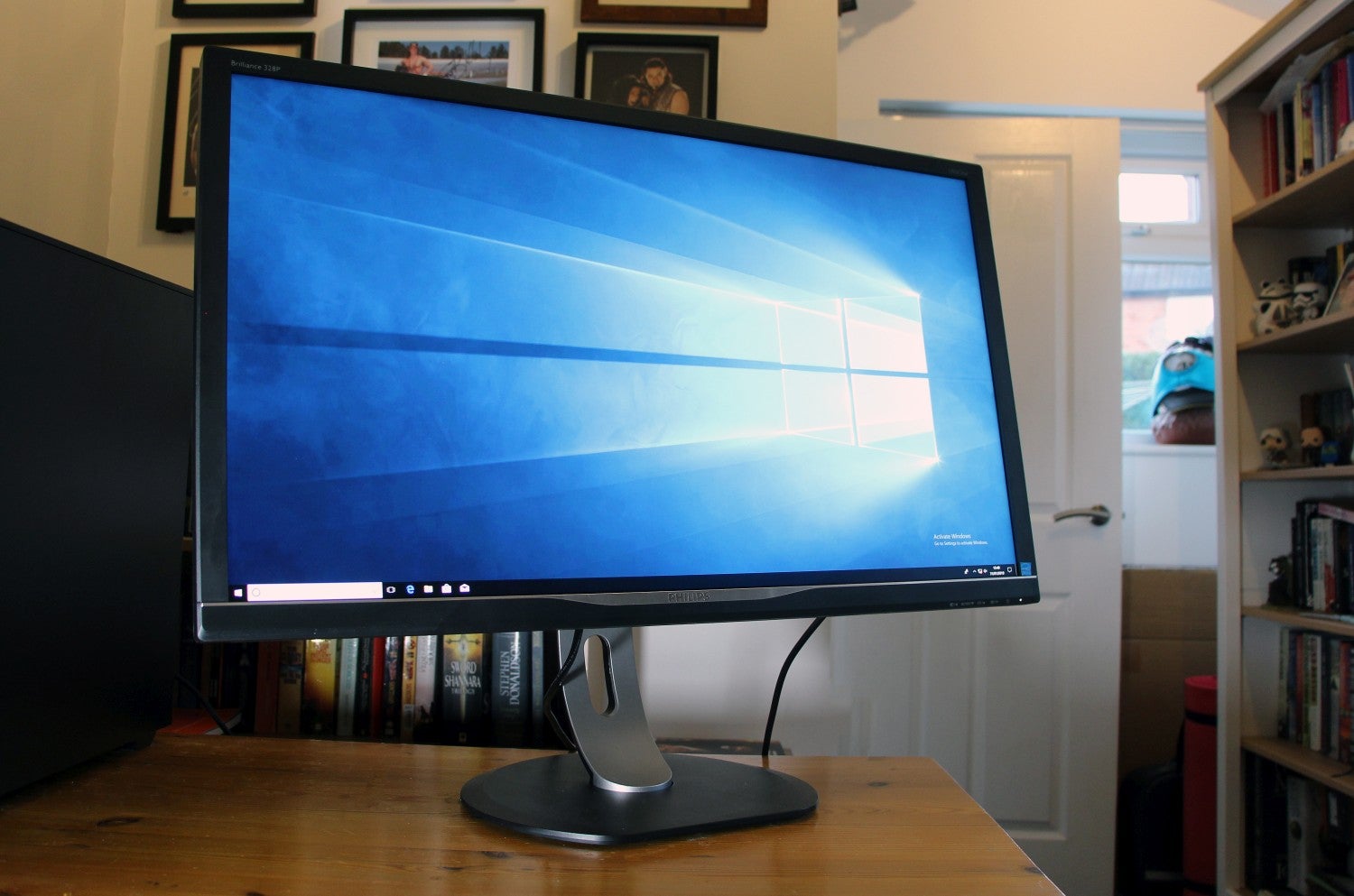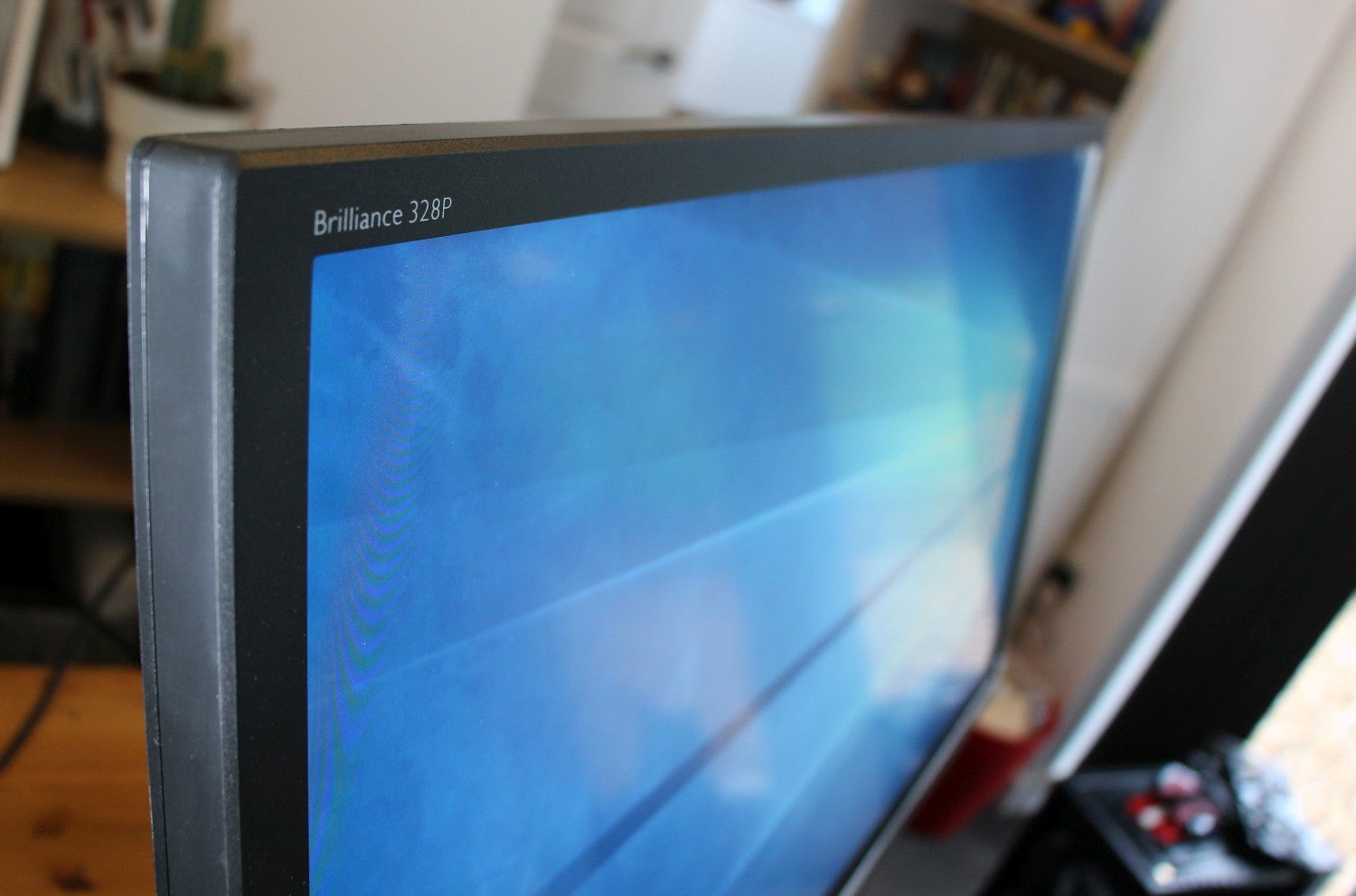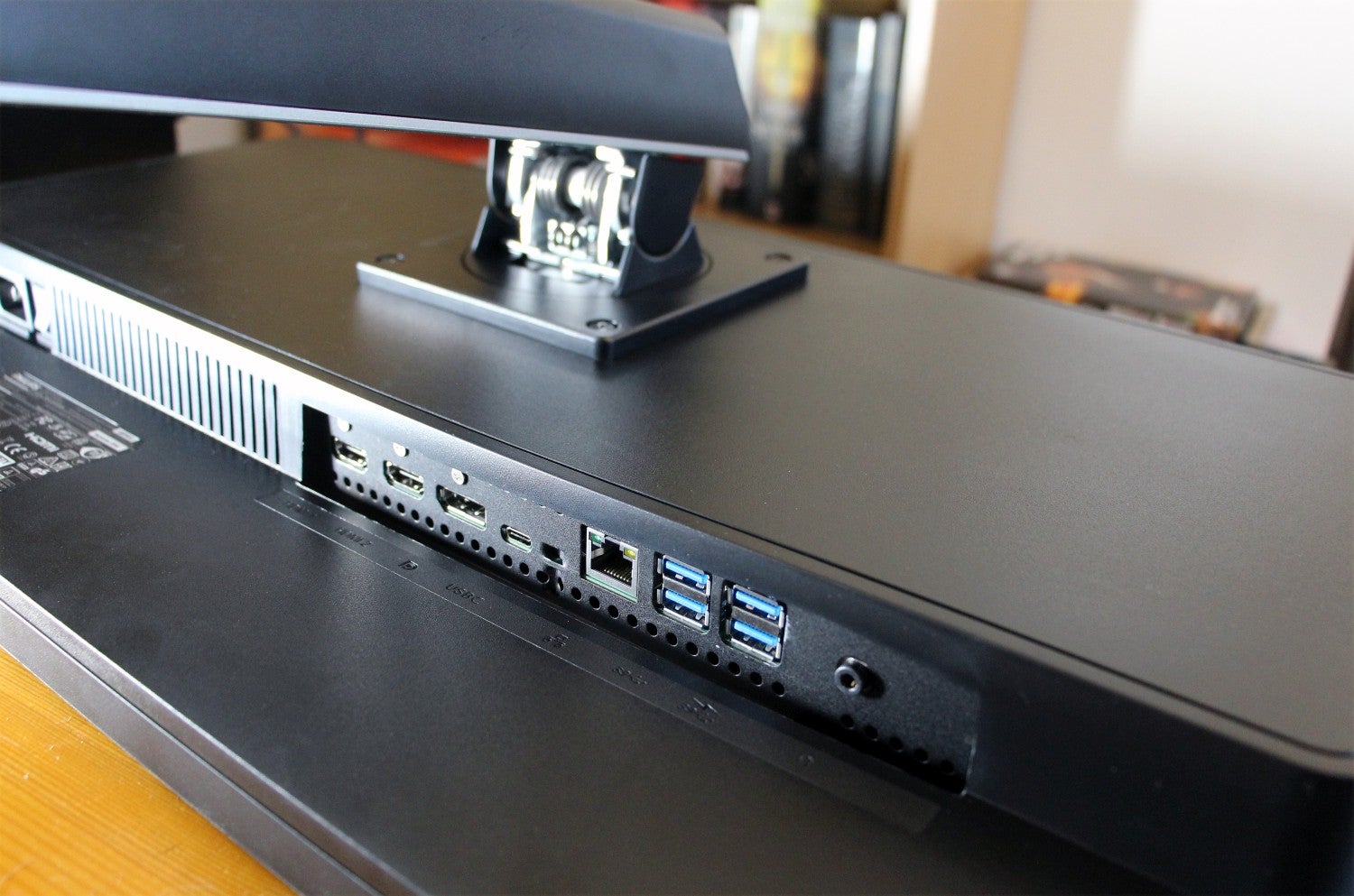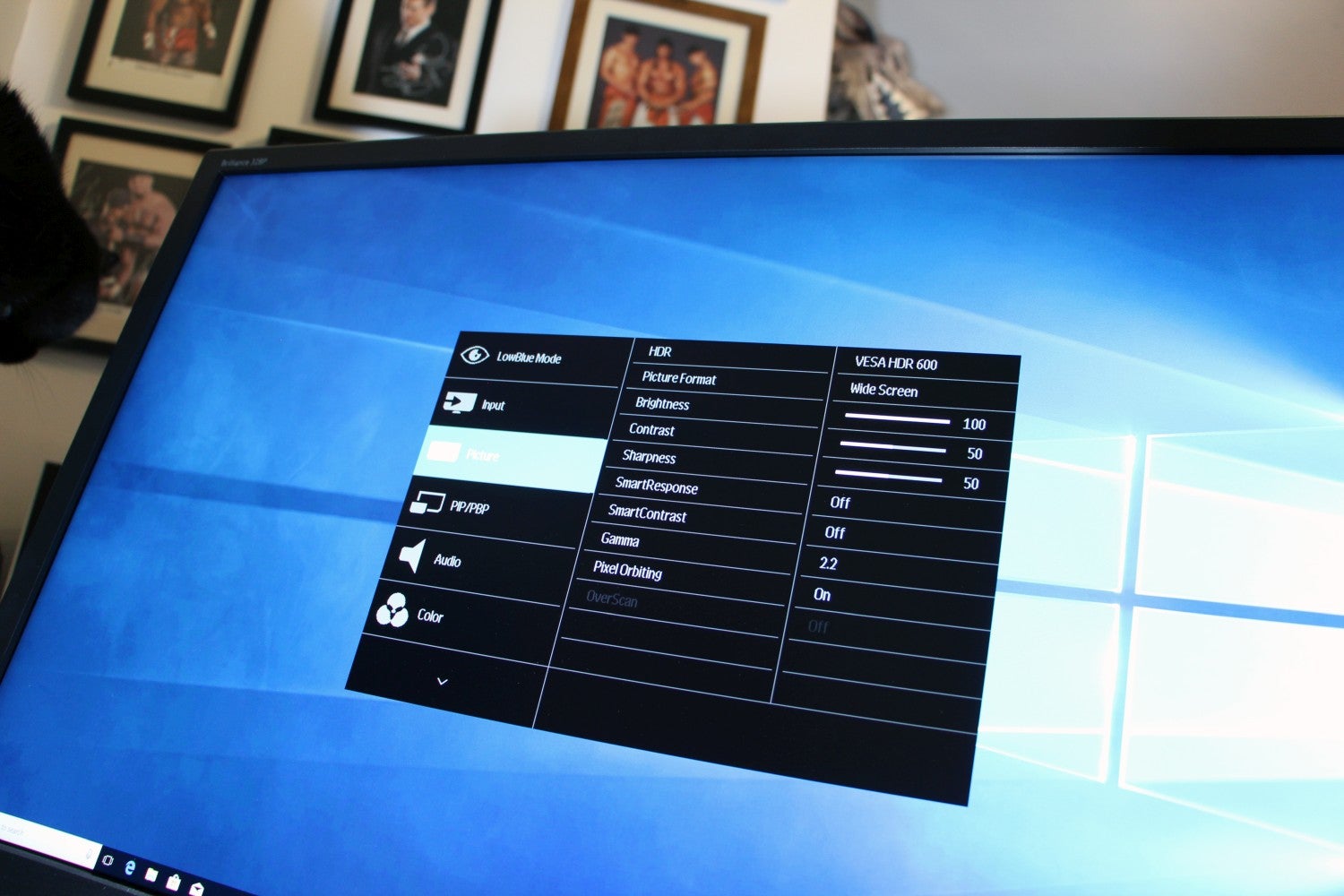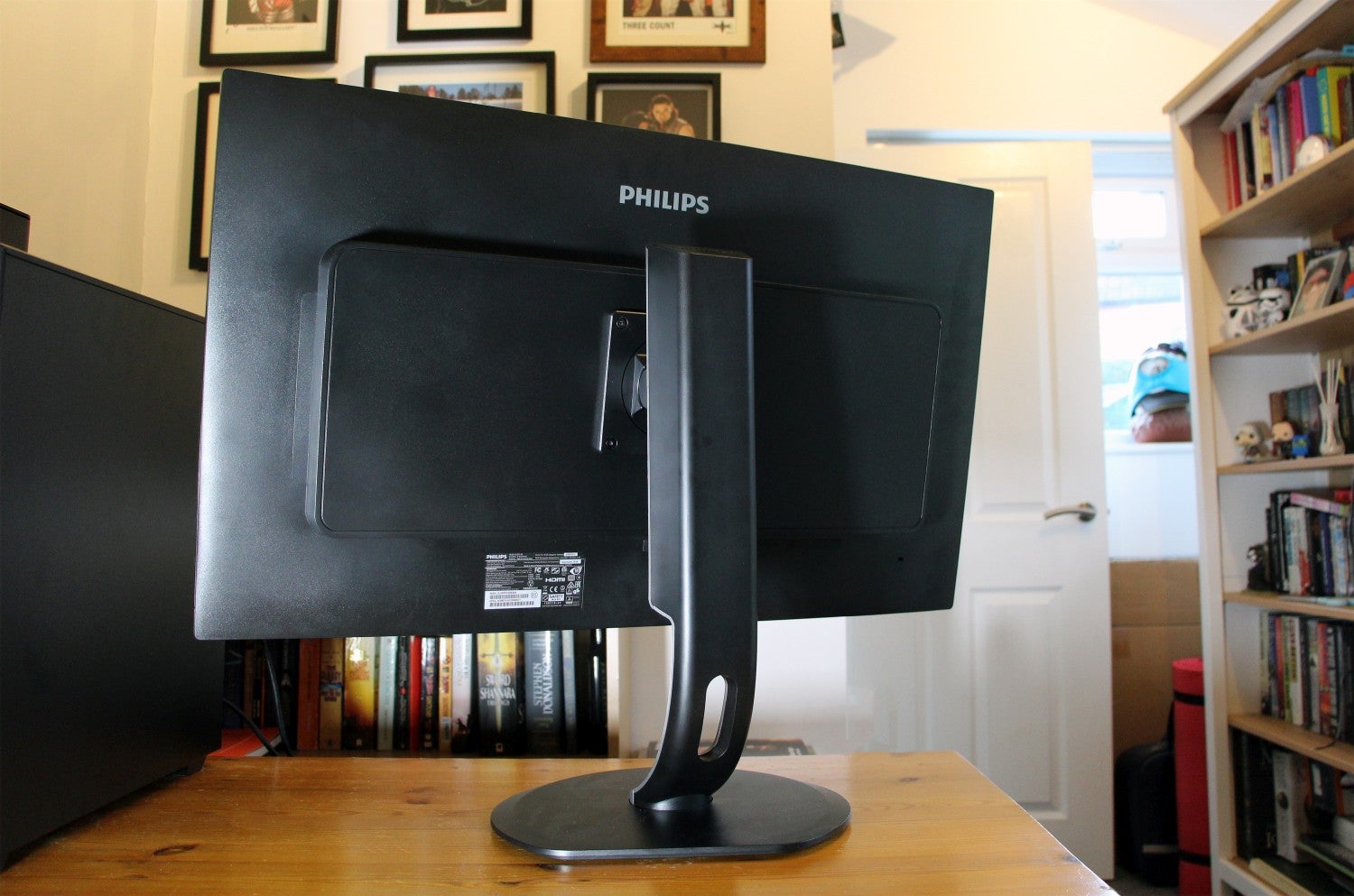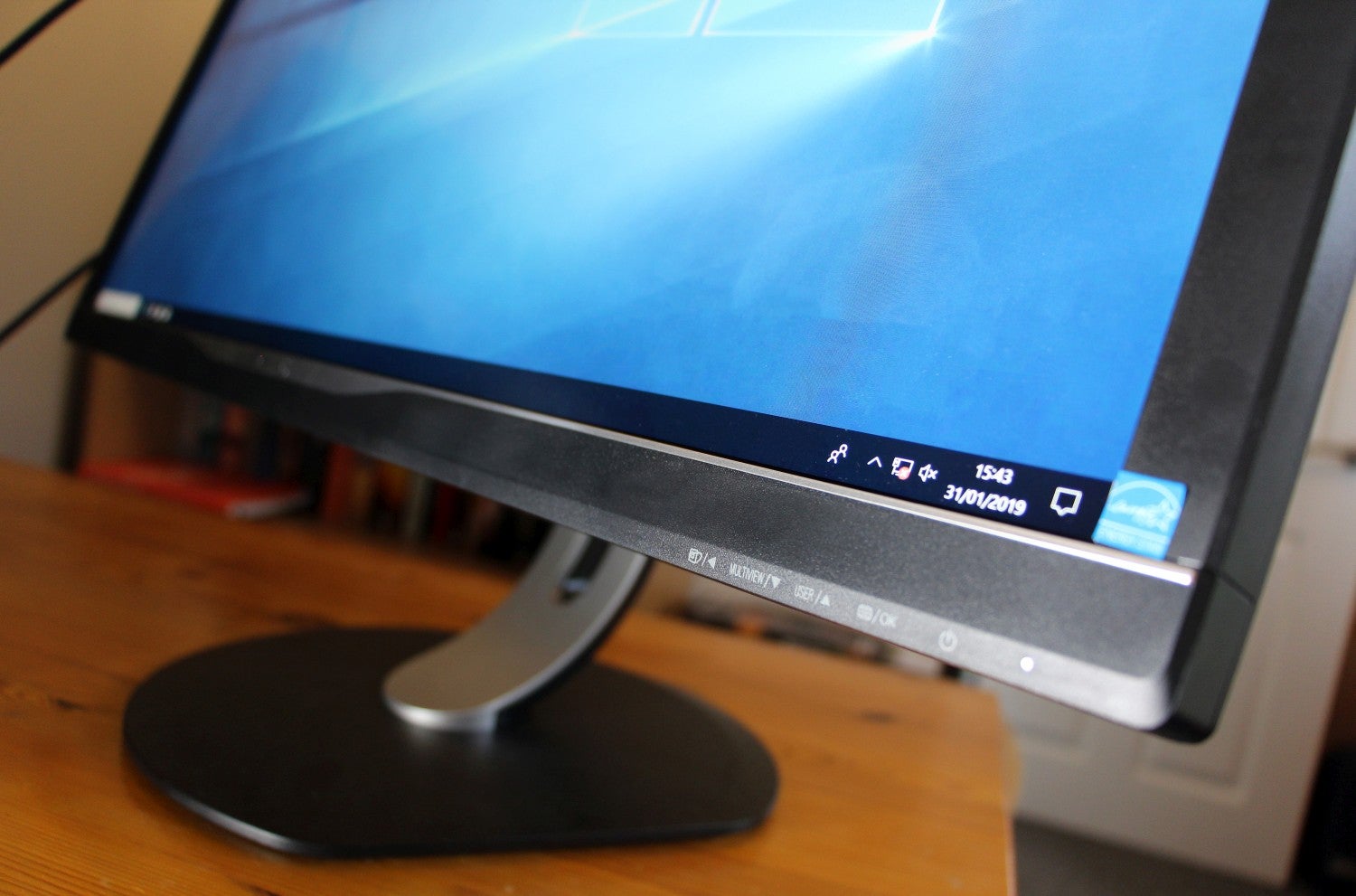Philips Brilliance 328P (328P6VU) Review
Philips Brilliance 328P (328P6VU) Review
The Philips Brilliance 328P is big, expensive and professional - but is it any good?

Verdict
An excellent screen that handles most work tasks – even if small issues are a hindrance
Pros
- Fantastic contrast levels
- Mid-range HDR protocol supported
- Loads of versatility
- Good colours
Cons
- Not the best HDR available
- Uniformity is disappointing
- Occasionally clumsy to use
Key Specifications
- Review Price: £559
- 3840 x 2160 resolution
- 32in VA panel
- VESA DisplayHDR 600-compatible
- 4ms response time
- 60Hz refresh rate
- 1 x DisplayPort, 2 x HDMI
What is the Philips Brilliance 328P?
The Philips Brilliance 328P (328P6VU) costs more than many of its 4K rivals, but this screen does also aim to satisfy professional users offering great image quality alongside some solid features.
Can a professional panel with high dynamic range (HDR), a 4K resolution and a 10-bit screen convince users to open their wallets just a little wider?
Philips Brilliance 328P – Design and features
ThePhilips Brilliance 328P doesn’t have any revolutionary features, but it does bring plenty to the table when it comes to productivity and colour accuracy.
For starters, it has a 10-bit LCD screen. As such, this panel can display over one billion colours – far more than the 16.7 million produced by the 8-bit panels that usually make up consumer displays.
Alongside the ability to display more individual colours than some of its more affordable rivals, having a wider colour gamut also means you’ll get better depth and gradation between different shades.
Both factors are important for colour-sensitive work, where having a greater number of colours to play with results in more precision and range.
The use of an LCD panel with vertical alignment (VA) tech, is interesting. VA screens are regarded as displaying better contrast than competing IPS panels, but poorer colour accuracy – which is the reason many productivity and design screens use IPS. The choice of VA is, inevitably, a compromise to keep the costs down – VA colour accuracy isn’t that far behind IPS, and this technology is cheaper to use.
By way of comparison, an 4K, 32-inch IPS panel with HDR would set you back at least £100 more than the 328P’s £559 price.
The Philips Brilliance 328P’s other big feature is HDR, adhering to the VESA DisplayHDR 600 standard. This is a mid-range HDR protocol that demands a screen have a backlight strength of 600 nits for short bursts of colour and a 350-nit brightness level for prolonged periods. It also calls for a screen to have a 0.1-nit black level and for it to cover no less than 90% of the DCI-P3 colour gamut.
It’s a step up from other screens I’ve seen recently, such as the AOC AGON AG322QC4 and ViewSonic XG2340C. Those panels adhere to the DisplayHDR 400 protocol, which is an entry-level HDR standard that delivers minimal benefit.
However, DisplayHDR 600 still only sits in the middle of VESA’s HDR protocol slate, which means that there are higher standards still that the Philips Brilliance 328P isn’t achieving. The DisplayHDR 1000 specification, for instance, calls for a 1000-nit backlight and a peak black level of 0.05 nits.
The inclusion of DisplayHDR 600 on the Philips isn’t bad, however. There’s a noticeable improvement in contrast, depth and punch when viewing HDR content, especially when compared to DisplayHDR 400 screens. It can’t match the top HDR protocols, but it’s a step up for a panel at this price.
Of course, while HDR content does look decent on this screen, the situation isn’t quite that simple. There still isn’t a huge amount of HDR content and software around, whether you’re working with photographs or video, watching movies or playing games.
Right now, it’s a technology for the future that has a limited impact today. More content and software will become available, though, and this screen’s reasonable HDR protocol gives it a solid shelf-life.
The inclusion of a 10-bit VA panel and HDR bode well for work, but in other departments the Philips’ specification is ordinary. Its refresh rate tops out at 60Hz, and there’s no syncing technology. The latter isn’t a critical omission, but it would have been nice to have the option of smoother gaming movement.
It has a middling 4ms response time, and Philips claims that it handles 94% of the Adobe RGB colour gamut.
The 4K resolution, when spread across a 32-inch diagonal, delivers a density level of 140ppi. That’s decent – it’s very crisp, and it’s difficult to see pixels even when looking closely. The plenty of screen real estate, and the well-balanced density level means that you could get away with using Windows 10 with minimal scaling.
An even sharper experience is achievable by buying a 27-inch 4K screen, but the extra crispness won’t be transformative.
The Philips has some good features, but it still doesn’t tick every box when it comes to high-end work tasks such as design and photography. That’s no surprise – at £559, this screen is planted firmly in the middle of the market when it comes to work screens.
If you require a proper professional 4K panel with 100% Adobe RGB coverage or better HDR, you’ll have to pay nearer £1000 – or maybe more.
Related: Best monitors 2019
Philips Brilliance 328P – OSD and setup
It’s relatively easy to get the 328P up and working. The base attaches to the stand with a single thumbscrew, and the stand secures to the screen using four screws. Those screw-points are also compatible with VESA 100 standard mounts.
There’s a huge amount of versatility on offer. The panel has 180mm of height adjustment, which is around 70mm more than most screens – and it also has side-to-side swivelling and front-and-back tilting. Unusually for a 32-inch screen, the panel can also be swung around into portrait mode.
The Philips offers plenty of versatility when it comes to connections, too. You get the usual DisplayPort 1.4 connector and pair of HDMI 2.0 ports, but that’s not all. The Philips has four USB 3.1 ports and a Type-C connector that can be used for charging.
It has a pair of 3W speakers that deliver serviceable sound. And, surprisingly, it even has an Ethernet port. With networking and USB connectors built in, you could conceivably connect all of your peripherals to this panel and make your desk far tidier.
It’s a great slate of features, but there are issues. While offering plenty of positional options, for instance, the screen itself is a little wobbly. The Philips isn’t particularly smooth when moving up and down, either – the stand feels stilted and stiff.
The USB ports are hidden around the rear of the panel and face downwards, which makes frequent access difficult.
The on-screen display is fine, with all of the usual options organised into sensible menus. Navigation isn’t the best, however. The OSD is controlled by four touch-sensitive buttons at the front of the screen. They’re super-sensitive, though, so the screen frequently registers too many clicks – and there’s no haptic feedback.
The buttons have dull icons that are tricky to see, and they sit next to the identical power button – so I even managed to turn the screen off by accident when trying to use its OSD.
Related: Best Ultrabook 2019
The tricky navigation, rear-mounted USB ports and stilted movements are faults, sure, but they’re not terminal issues. The USB mountings won’t be problematic once peripherals are plugged in and left in place, and the awkward navigation won’t be noticeable if you rarely head to the OSD.
When it comes to aesthetics, meanwhile, the Philips is most certainly a business screen. It has chunky bezels, sensible dark plastic and metal is used throughout, with a base and standard with only the tiniest concession to attractive design.
It’s hefty, too, at 9.3kg. And, with a maximum height of 657mm and a width of 742mm, it will take up plenty of room on the average desk.
Philips Brilliance 328P – Image quality
While the Philips does deliver good image quality results, its relative position in the middle of the market – and the compromises that involves – do mean that it never achieves greatness.
Take its factory results. The screen tested here returned a peak brightness level of 456 nits. That’s a fantastic figure by almost all standards, and higher than almost everything else you’ll find on the market.
It’s higher than the 350-nit figure required by VESA for constant operation, but it falls short of the 600 nits needed by DisplayHDR 600 for the flashes of light where HDR will really come into its own.
Similarly, the black measurement of 0.14 nits is good – but short of the 0.1 demanded by this screen’s HDR protocol.
The end result is a measured contrast ratio of 3257:1. That’s a little higher than what Philips actually quotes for this panel, and it’s fantastic – higher than almost anything short of screens and TVs that adhere to more demanding HDR standards.
In real-world use, that contrast figure has several benefits. It means that HDR content does look reasonably punchy – you’ll notice the difference when compared to normal content. It also means that, in more conventional scenarios, the Philips offers fantastic brightness, vibrancy, punch and depth across every kind of colour and shade.
That’s great for work, because it means you’ll be able to pick out detail and handle complex images and colour situations at both the deepest and brightest ends of the spectrum.
However, the Philips’ colour performance isn’t perfect. Philips claims a sub-2 Delta E for this screen, but at factory settings it managed an average of only 2.52 – a good result, but not great. At least its colour temperature of 6639K is better, so those colours won’t appear chilly or oversaturated.
While that factory Delta E result isn’t able to match Philips’ claims, switching to the screen’s RGB mode does have an impact. It keeps contrast and colour temperature the same while improving the Delta E to an excellent average of 1.25. That’s a big leap, and it brings the 328P in line with Philips’ colour claims. I’d activate this mode as soon as the screen is attached to my PC.
The Philips Brilliance 328P displays 100% of the sRGB colour gamut in this mode, which is a perfect result for less-demanding work tasks. It also handled 96.2% of the DCI-P3 gamut – so can handle the full range of colours required for HDR.
However, it displayed only 83.3% of the Adobe RGB gamut. That’s slightly above the gamut required for high-end design work, but it’s also an average result at best, and one which doesn’t match Philips’ claims of 94% coverage. If you do want a screen for particularly demanding Adobe-based colour work then you’ll have to spend more elsewhere.
HDR is activated by default, but turning the feature off didn’t cause any of those benchmark results to alter, or for the screen to change visually. That bodes well for switching between HDR and non-HDR content.
In some other tests, the Philips Brilliance 328P continued to underperform. Uniformity, for instance: in the top-left and top-right corners of the screen, the backlight lost 22% and 17% of its strength, while 20% vanished in the bottom-left segment.
Those figures are measured with the screen at maximum brightness, and this screen’s peak brightness level isn’t suitable for normal daily use. Dialling the brightness down will lessen the impact of those veering uniformity figures, but that’s true of any screen – and the Philips’ wayward corners still record results that are worse than most other panels.
These uniformity results won’t hinder most work tasks. However, if you’re working on complex and precise colour-based projects, you’ll want a screen that offers greater consistency – because even a small change to the backlight strength could impact how a project looks on the screen.
The 328P’s sRGB mode is excellent, but the rest of the 328P’s screen modes aren’t worth much. They’re more tuned to the office, with basic movie and game modes included. However, none of them alter the colour temperature or make much difference to the Delta E; they mostly adjust brightness, and that’s something the end user will do themselves anyway.
Related: Best tablet 2019
Why buy the Philips Brilliance 328P?
The Philips Brilliance 328P is a good screen, but small issues mean that it can’t achieve its full potential.
Take its image quality. Its contrast and colour accuracy figures are excellent, but they’re not quite good enough to match this screen’s claims about HDR. And, while this screen does have a decent HDR protocol that makes a difference, there are better HDR specifications out there. Uniformity is underwhelming, and I only got a sub-2 Delta E by using a particular screen mode.
The 328P looks good and offers plenty of versatility, but the stand is stiff, the ports are awkwardly positioned and the OSD navigation is awkward.
These are relatively small issues, however. For most workers, in the majority of colour-sensitive situations, the 328P will be easily good enough thanks to its great contrast, decent colours and a good slate of features. You’re only going to want to look for something better if you need a £1000+ screen for professional design or photography work.
Verdict
The Philips Brilliance 328P has generally excellent performance, a solid design and a good range of features. It offers reasonable HDR performance, too, and plenty of versatility. If extreme colour accuracy is a priority, though, you should look elsewhere.


